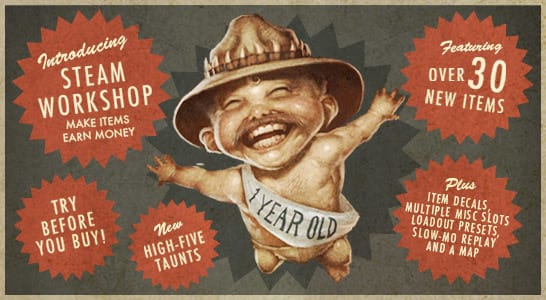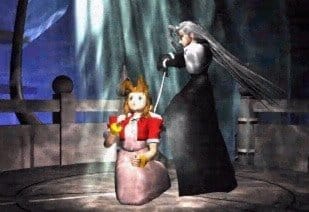DLC - To pay, or not to pay?
Microtransactions and DLC: a bright idea or a big mistake? Laurence Pope decides

So, a little over a week ago Valve brought out a fairly large update for their flagship game Team Fortress 2. So what? Ignoring the fact that TF2 is now over four years old and still receiving content updates which it celebrated this time last year when microtransactions were first introduced into the game - the MANN-conomy Update (I’m not making this up). Amongst other things the update allowed players to purchase in-game weapons and purely cosmetic add-ons for the nine classes with real-world cash. The update was initially received with mixed reviews – ‘buying your way to victory’ and ‘Valve’s sold us out’ were two of the many complaints angry fans put forward, whilst others maintained that nothing was on sale (at least, game-changing wise) that couldn’t be found by penniless schmucks. One year on, and everything’s (mostly) settled down.
For me, this raised a question – are microtransactions and, alongside them, DLC (Downloadable Content) a good or a bad thing for gaming as a whole? The answer is far from a simple ‘Yes, it’s the perfect next step’ or ‘No, I’d rather jump in a pool full of broken glass’. It almost fully depends upon how it’s implemented. Not fully? No. Quite possibly I’m nostalgic about the times when you bought a game and you got everything in one go, and now, paying extra for content that should have come with the product in the first darn place? Hmm.
In all fairness Valve has managed to implement microtransactions and distribute DLC in the best way possible. Most of their products (TF2, L4D1 and 2, Portal 2) have and continue to receive free large updates that throw in a lot of extra content: extra maps and campaigns for the L4D series; new challenges for Portal 2; and new weapons for TF2 – the sort of stuff most other game companies would charge for. To date, only TF2 and Portal 2 feature micro transactions, though the Portal 2 ‘store’ flopped rather miserably.
The TF2 ‘store’ was implemented remarkably well, however. All weapons and most cosmetic items are findable in-game through a random drop system, craftable through another menu, and there’s even an in-game trading/ bartering system so technically one doesn’t have to use the store to gain an advantage. In practice though weapons are a little harder to come by, but the point still stands – no money has to be spent in order to find everything that has any significant impact in battles. It’s by no means perfect, but Gabe Newell and the TF2 team have yet to go down the Bobby Kotick route. To give Valve extra credit, not all the money they earn stays with them. Valve introduced a scheme allowing modellers and mappers to submit their weapons, cosmetic items and maps to them. The best ones get implemented into the game, and 25% of the proceeds go to their creators. Big bucks can and have been made – after one update, one creator received a cheque for – wait for it – $47,000. If that’s not rewarding one’s fans, I don’t know what is.

Now that’s enough about a half-decent way to implement DLC and micro transactions. The immediate case that springs to mind regarding a poor (read: disgusting) way to do DLC is neatly illustrated by Bioshock 2. The problem? After the first ‘DLC download’ was released, it was discovered that the content delivered had actually been on the disc the whole time. The DLC download was not content – it was a key. You had already bought the extra content 2K were charging you for.
Later, 2K Games commented on the locked content, claiming it was ‘necessary to maintain consistency between all players regardless of whether they purchase the DLC or not.’ This paper thin rationale/dirty lie cut little ice with the rightly put-out gaming community. You do not do DLC like this. But, for this to be a marginally balanced argument one has to look on the other side of the fence. You need to worm into the heads of the game developers and see it from their point of view. DLC and microtransactions allow developers to create new maps, weapons, campaigns, or what have you, without needing to initiate a long and expensive game development cycle. It’s cheaper to make compared to a full game, and they make a fair amount of money from it. TF2’s store does so well that Valve was able to make TF2 free to play and still pump out profitable updates.
One does need to remember that game companies are, at the end of the day, businesses out to make money. That’s what a business does, and from this point of view DLC and microtransactions are simply a logical step forward. Fans will buy new content, helping to fill the coffers of the afforementioned companies.
But is it the best way forward? To commit the argument of moderation, everything needs to be balanced. DLC and microtransactions can enrich a game, provided they’re fairly priced and offer sufficient content. On the other hand, it’s no substitute for new games; too much DLC stifles creativity. Overuse has the potential to make comapnies lazy, wallowing in old products to earn them money. Like technology, games need to keep inovating and testing new things out.
Valve has shown that innovation, DLC and microtransactions can walk hand in hand. They are able to offer huge content packs for free, which in turn endears them to their customers, keeping them loyal – and keeping them buying. But I’ll be honest here; as I said at the start, I’ll never fully come round to the idea of paying extra for something that really should have come with the initial product.









